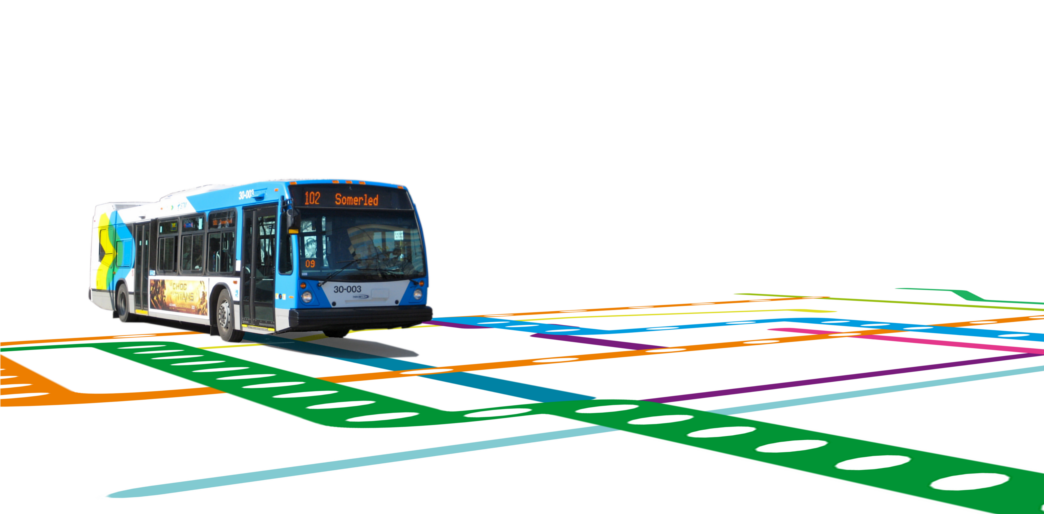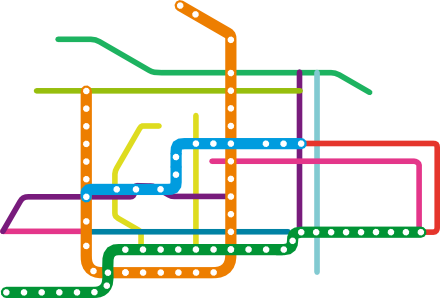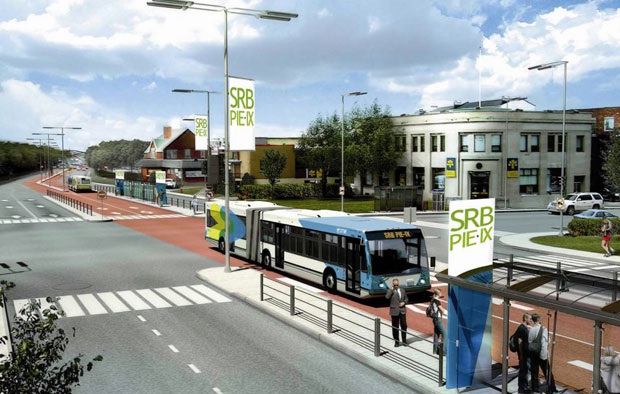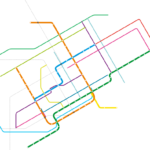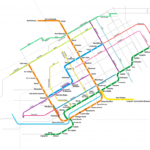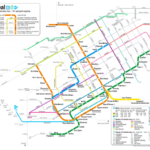Better Buses I: Frequent Service Does Not a Network Make
September 21st, 2010 by ant6nThis is part I of a series on ideas how to make bus services more attractive
While making a map for Montreal’s frequent bus service, branded the “10 minute network”, it became obvious that just taking a couple of heavily utilized bus lines and upgrading or labeling already existing all-day frequent service doesn’t make a network yet. The STM should now focus on creating creating a new level of service. Before this brand there were two levels of transit within the island of Montreal: A primary, The metro, with high speed, high frequency and good reliability in a network that can be easily understood; and a secondary, a large list of bus lines, with all sorts of different service patterns and some with very low frequency (I am not counting the commuter trains at this point, since they don’t seem to be designed for people on the island of Montreal).
Many users will likely rely on the metro as much as possible and only switch to buses where the metro is not available — or when taking a trip every day. Commuters tend to find the services that is most useful to them, even if it is obscure, infrequent and relies on expert knowledge. The metro on the other hand will get you to many places and the only thing you need to know when you start your journey is the station where you want to get off; no schedules or further geographical knowledge is needed.
The reseau 10 minute max attempts to create a new secondary network, supplementing the metro, which can also be easily understood and which is frequent so that no schedules are needed (we’ll see about the reliability come next winter). It is most useful if it emulates the user experience of the metro as much as possible, while creating a network that makes sense by itself, covering most of the city in tandem with the metro. It should be accessible and appealing to the novice user, who can then reach any part of the city without much preparation etc. This should improve mobility, and thus the ability to rely on public transportation, making it more competitive form of transport.
This idea is partly due to Jarret Walker at provide a similar experience as rail, that they are equal in a way. I believe that rail is the better form of transit in many instances, but it is simply not affordable in most places, either to build or operate. Montreal is currently in phase I and doesn’t even know the costs of the 3 km extension of the blue line. It may be completed by 2016 or so – 10 years after last extension. If the province manages to build only 3km every 10 years, the system will never cover the entire city (because it grows faster than that). Even a planned Bus Rapid Transit line along Boulevard Pie-IX is is now estimated to cost 305$M. Although not grade separated like “real BRT”, it will still cost 20$ million per Km.
So it is not really realistic to ask for the metro to spread all across the city, or even bus rapid transit as planned on Pie-IX. The secondary network of frequent bus lines is all we have in many parts of the city, and we should make the best of it. In the following series, I will discuss a couple of comparatively simple ways to create a better secondary form of transit, mostly by emulating the user experience of rapid transit. These ideas should not only be applicable to Montréal, but also other cities.
Continue on part II.
